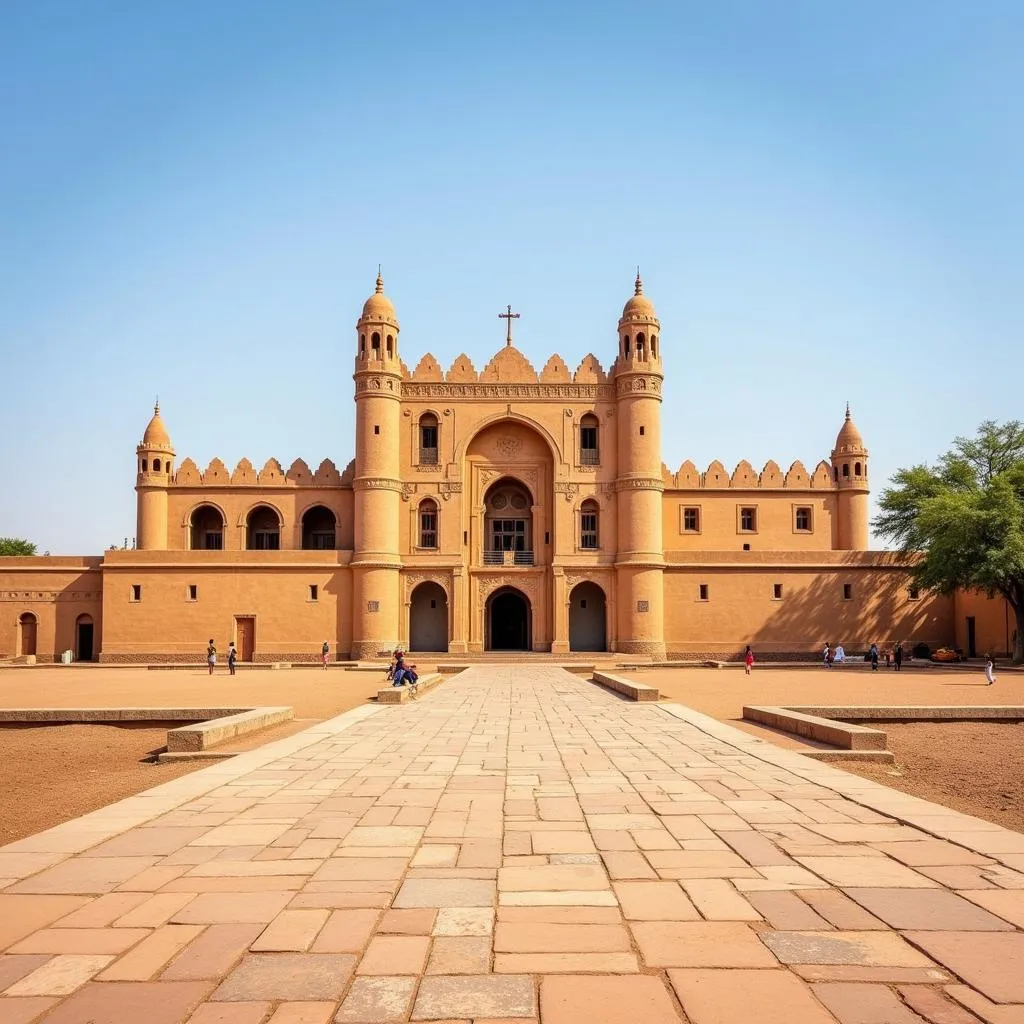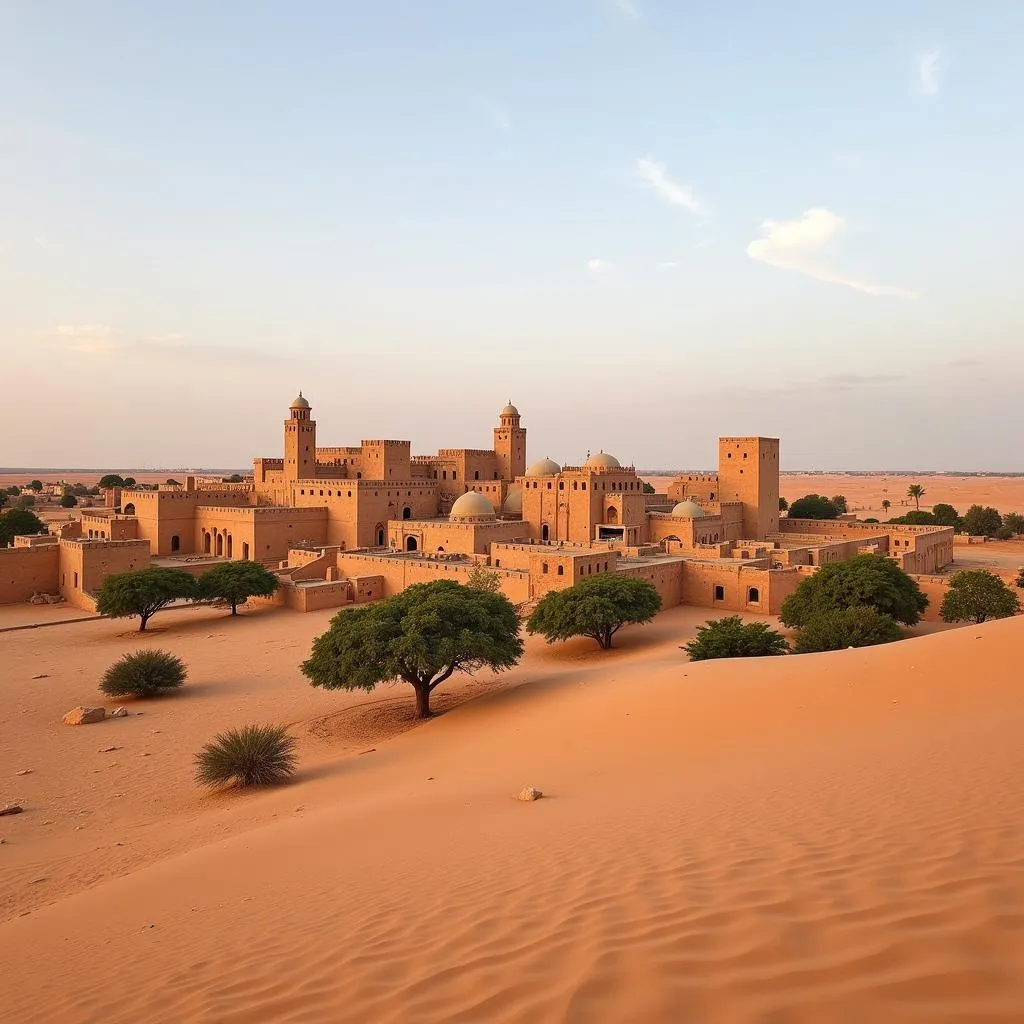Timbuktu: The African City Famous as a Center of Learning
Timbuktu, a city in the West African nation of Mali, evokes a sense of mystery and intrigue. For centuries, this city, located on the edge of the Sahara Desert, was a renowned center of learning and commerce, attracting scholars, traders, and travelers from across the globe. Timbuktu’s reputation as an intellectual hub during the 15th and 16th centuries cemented its place in history as the “African City Famous As A Center Of Learning.”
The Rise of Timbuktu as a Center of Learning
Timbuktu’s transformation into a beacon of knowledge began with its establishment as a seasonal camp for Tuareg nomads around the 11th century. Its strategic location on the trans-Saharan trade routes, connecting North Africa with sub-Saharan Africa, proved pivotal in its growth and prosperity. As trade flourished, so did the city, attracting merchants, scholars, and artisans from various cultures, including Arabs, Berbers, and other West African ethnic groups.
The arrival of Mansa Musa, the famed king of the Mali Empire, after his pilgrimage to Mecca in 1325 CE, marked a turning point for Timbuktu. Deeply impressed by the Islamic scholarship he encountered during his travels, Mansa Musa invested heavily in the city’s development, including the construction of mosques, libraries, and madrasas (Islamic schools). He invited renowned scholars from across the Islamic world to teach and share their knowledge, further enhancing Timbuktu’s reputation as a center of Islamic scholarship.
The Golden Age of Timbuktu’s Scholarship
Under the rule of the Mali Empire and later the Songhai Empire, Timbuktu flourished as a center of learning. The city became home to three prominent mosques – Djinguereber, Sankore, and Sidi Yahya – which housed important Islamic universities and attracted students and scholars from far and wide.
 Timbuktu mosque and university
Timbuktu mosque and university
The curriculum in these institutions was diverse, encompassing Islamic law (Sharia), theology, grammar, rhetoric, astronomy, mathematics, and medicine. Scholars in Timbuktu were renowned for their expertise in various fields, contributing significantly to advancements in these areas. For instance, they made significant contributions to mathematics, particularly in the field of algebra, and astronomy, developing accurate lunar calendars and astronomical charts.
Perhaps the most enduring legacy of Timbuktu’s scholarship lies in its vast collection of manuscripts. These handwritten texts, often penned in Arabic but also in local languages like Fulani and Songhay, cover a wide range of subjects, including history, literature, philosophy, medicine, and astronomy.
“These manuscripts are a testament to the vibrant intellectual life that once thrived in Timbuktu,” notes Dr. Aïcha Benzirar, a historian specializing in medieval African scholarship. “They provide us with invaluable insights into the history, culture, and knowledge production of this period, challenging Eurocentric narratives of intellectual history.”
 Ancient manuscripts from Timbuktu
Ancient manuscripts from Timbuktu
The Decline and Rediscovery of Timbuktu’s Legacy
The decline of Timbuktu’s intellectual prominence began in the late 16th century with the Moroccan invasion, which led to political instability and the departure of many scholars. However, despite facing various challenges, including colonization, drought, and poverty, Timbuktu has preserved its legacy of learning.
Today, Timbuktu remains a UNESCO World Heritage site, attracting tourists and scholars interested in its rich history and cultural heritage. Efforts are underway to preserve and digitize the city’s invaluable manuscripts, ensuring that the knowledge they contain is accessible to future generations.
 Modern-day Timbuktu, a UNESCO World Heritage Site
Modern-day Timbuktu, a UNESCO World Heritage Site
Conclusion
Timbuktu’s story is a powerful reminder of Africa’s significant contributions to world knowledge and scholarship. Despite facing periods of decline, the city’s legacy as a center of learning continues to inspire and captivate people around the world. As we delve deeper into the history of Timbuktu, we uncover a rich tapestry of intellectual pursuit, cultural exchange, and a commitment to knowledge that transcends time.
FAQs
1. Why is Timbuktu called a center of learning?
Timbuktu was a renowned center of Islamic scholarship, home to prestigious universities and attracting scholars from across the Islamic world during its golden age (14th-16th centuries).
2. What subjects were studied in Timbuktu?
Scholars in Timbuktu studied various subjects, including Islamic law, theology, grammar, rhetoric, astronomy, mathematics, and medicine.
3. What are the Timbuktu manuscripts?
The Timbuktu manuscripts are a vast collection of handwritten texts covering diverse subjects, showcasing the city’s intellectual vibrancy.
4. Is Timbuktu still a center of learning today?
While not as prominent as in the past, Timbuktu remains a UNESCO World Heritage site and a center for cultural and historical research.
5. How can I learn more about Timbuktu?
You can find more information about Timbuktu through books, documentaries, academic journals, and reputable online resources dedicated to African history and culture.
For further support contact us:
Phone Number: +255768904061
Email: kaka.mag@gmail.com
Address: Mbarali DC Mawindi, Kangaga, Tanzania.
We have a 24/7 customer support team.



